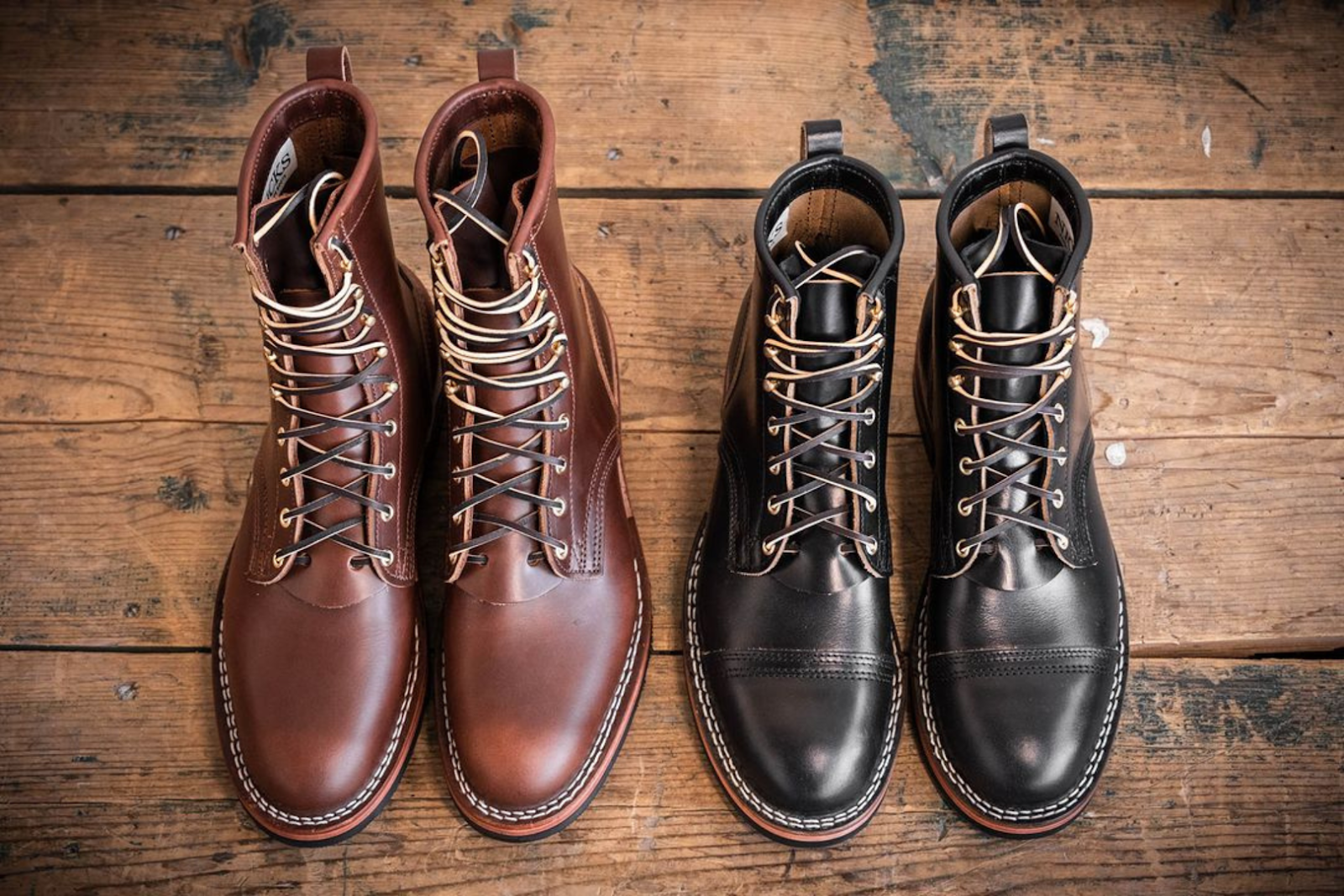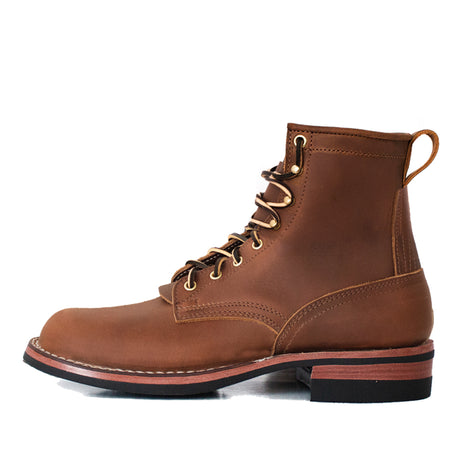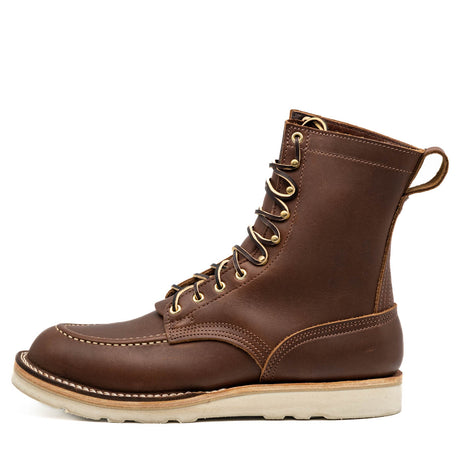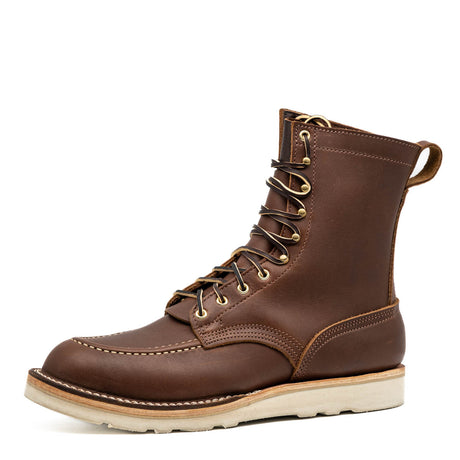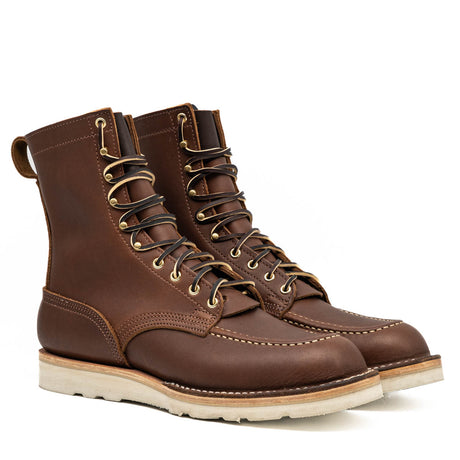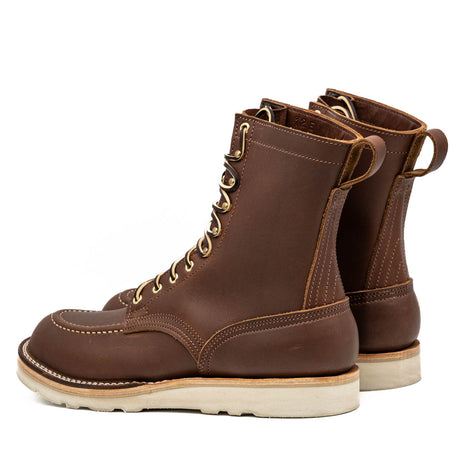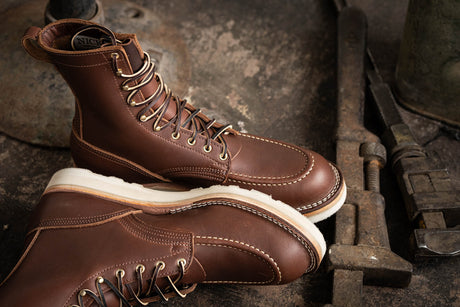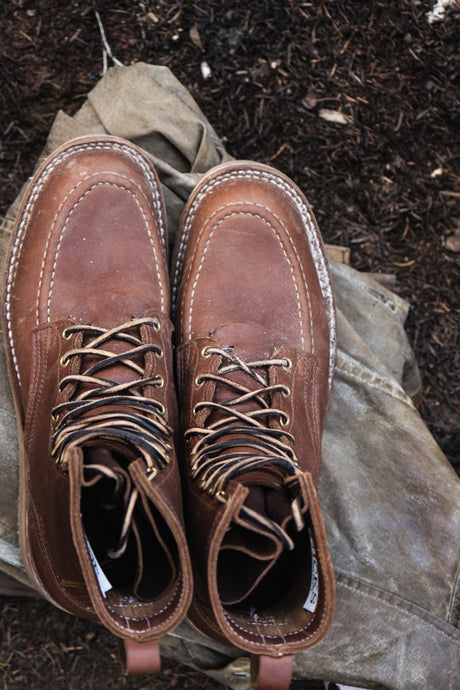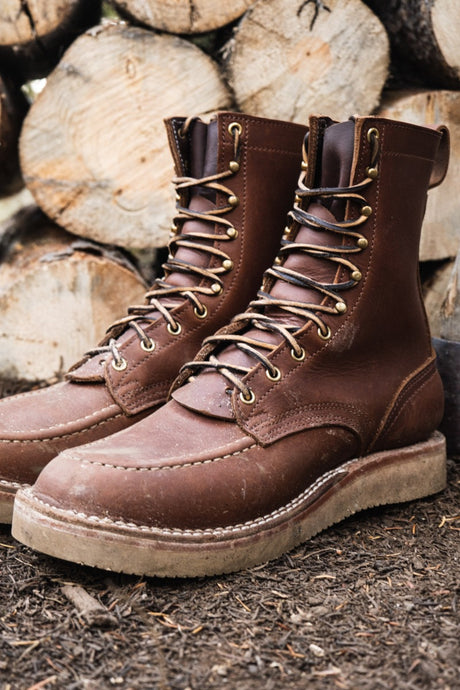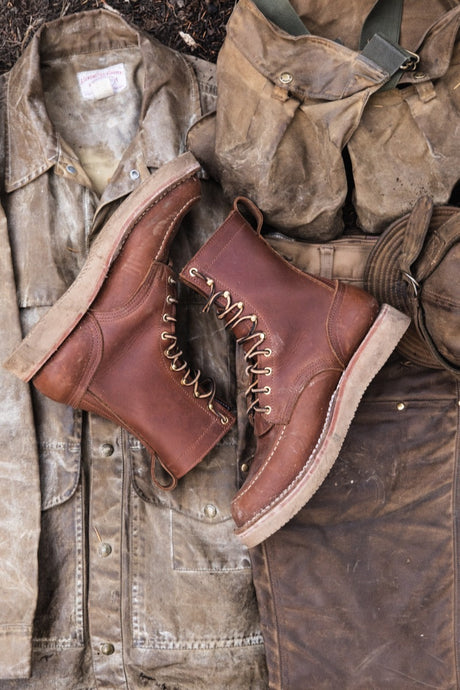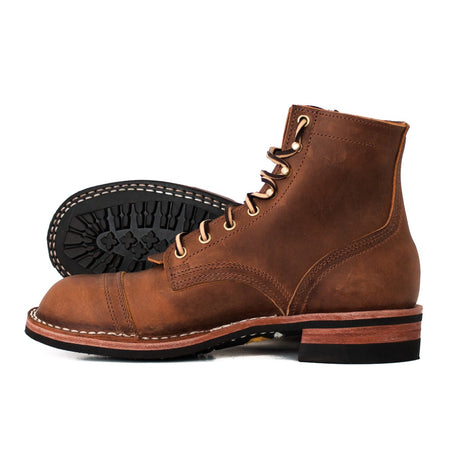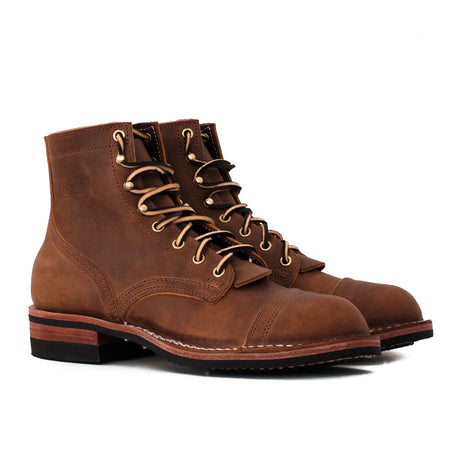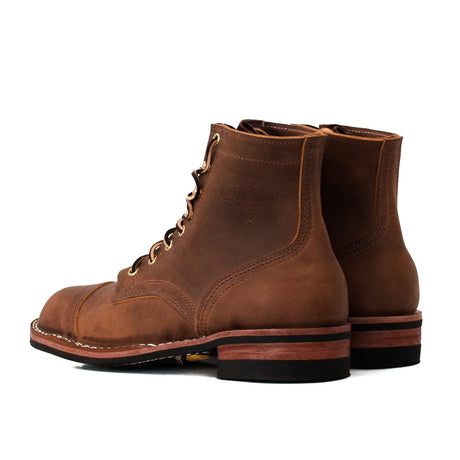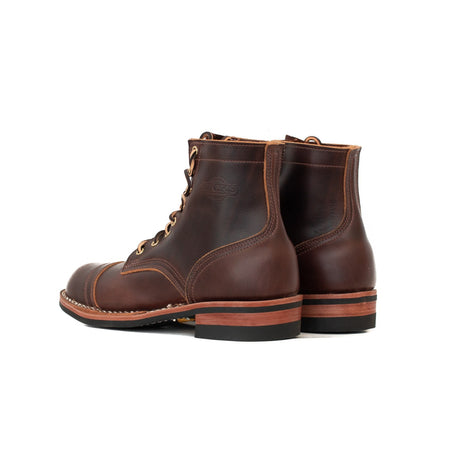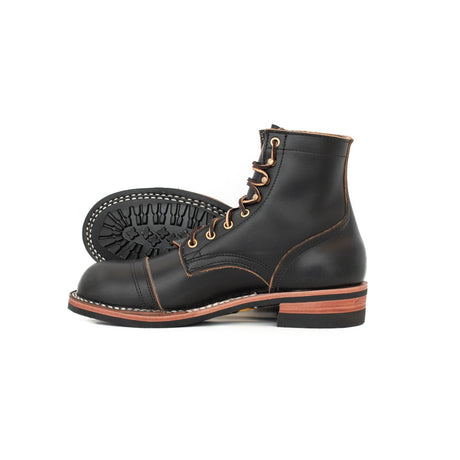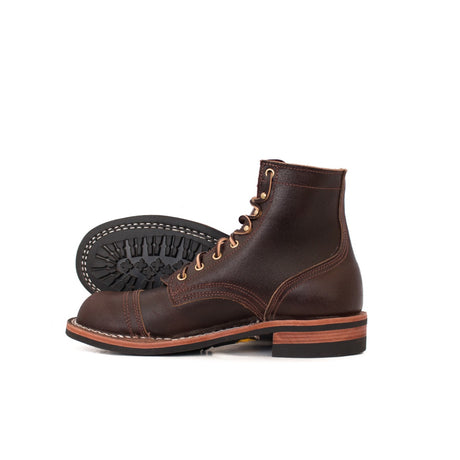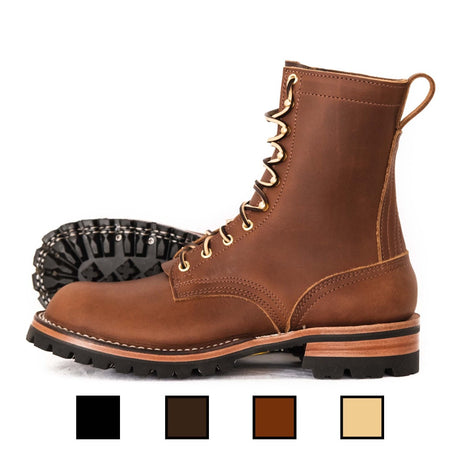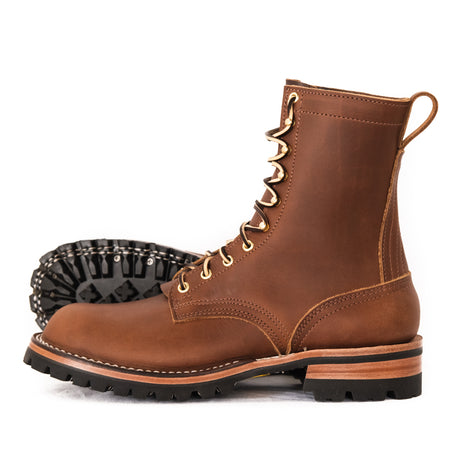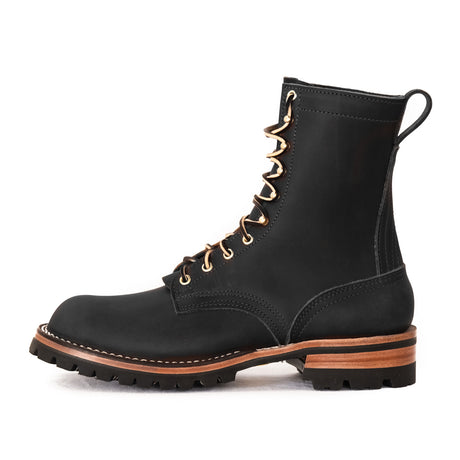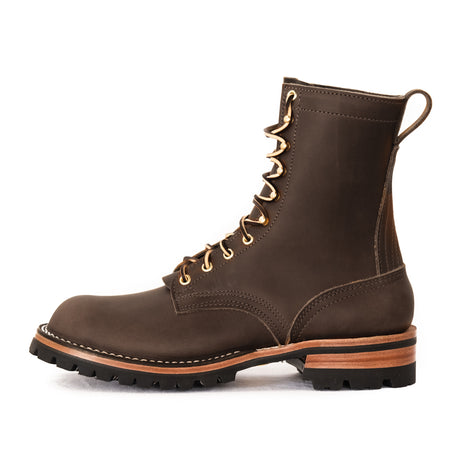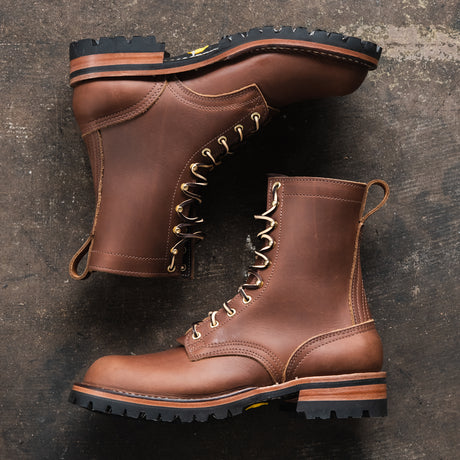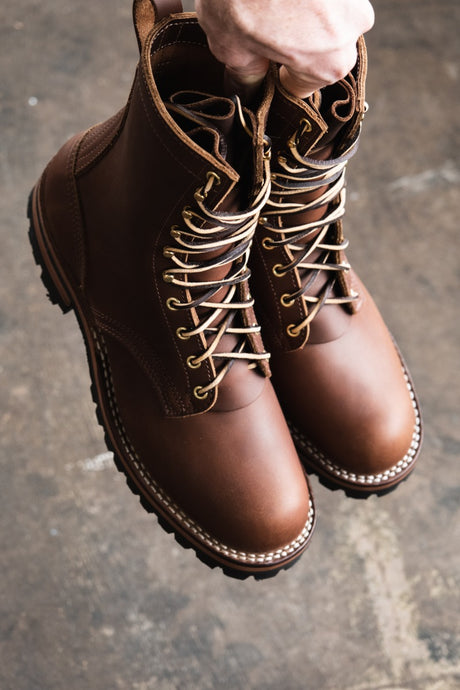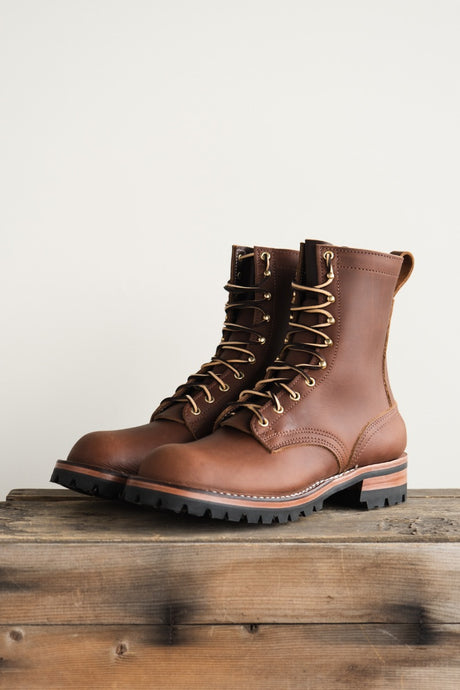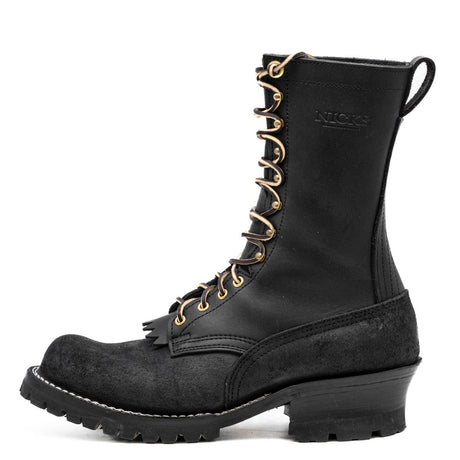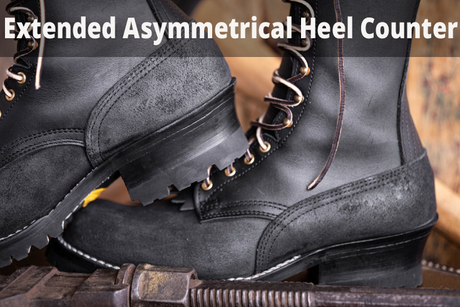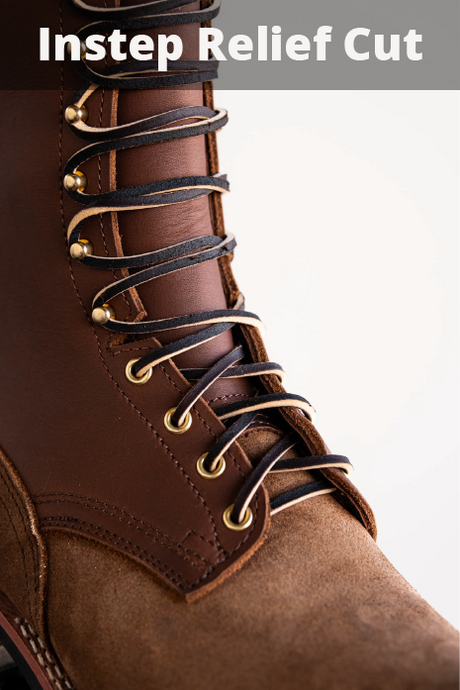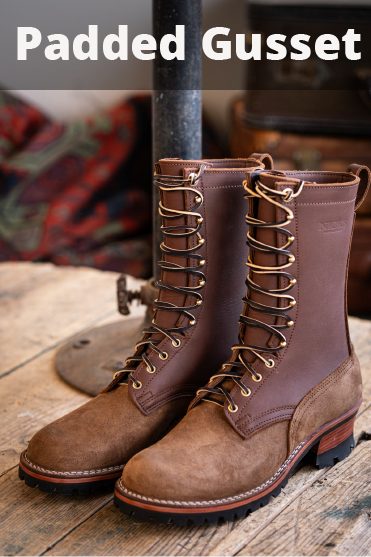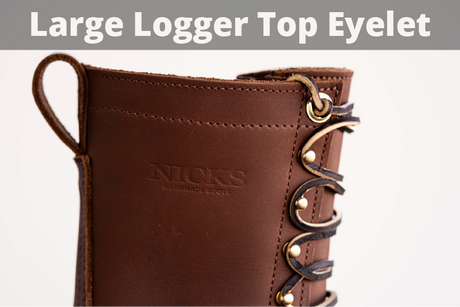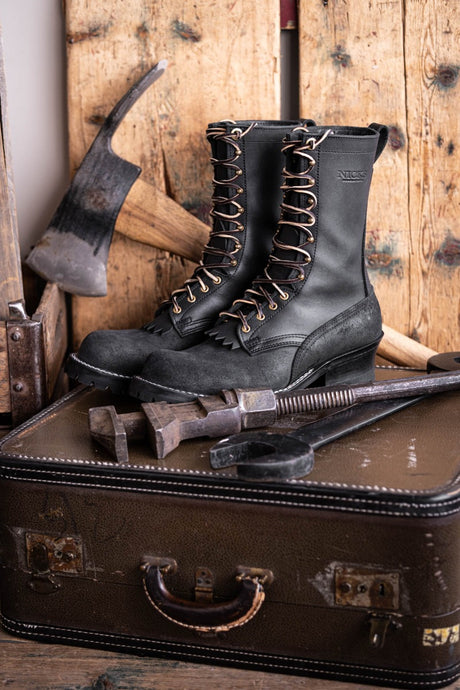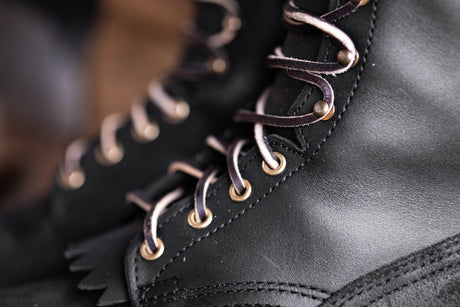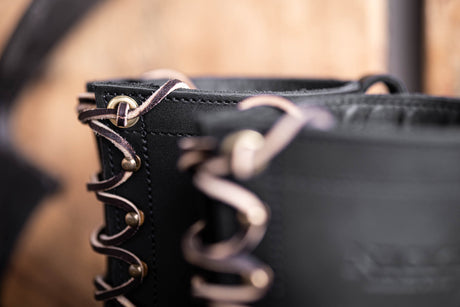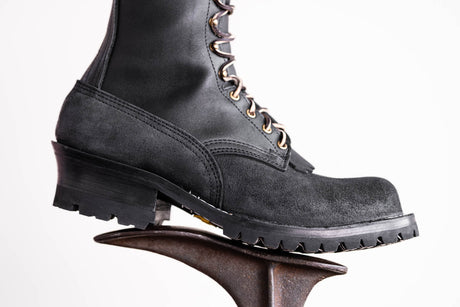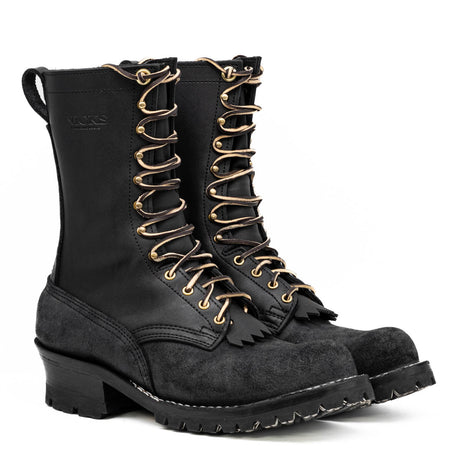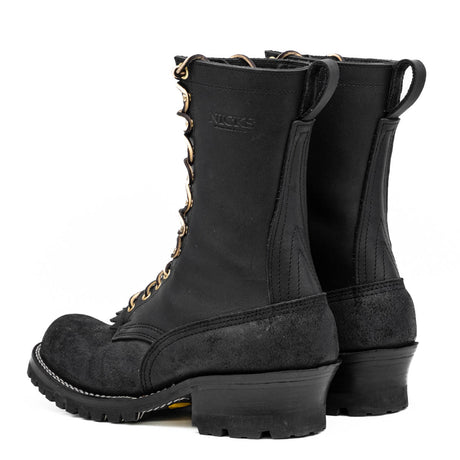Key Takeaways:
- Understanding Width Terminology: Familiarity with boot width terminology, such as B, D, E, and EE, is essential to navigate sizing charts effectively and make informed purchasing decisions.
- Impact of Boot Fit on Performance: Choosing the correct boot width is not just about comfort; it significantly enhances performance, whether you're at work or engaging in leisure activities.
- Adapting to Personal Needs: Consider your personal needs such as the type of socks you wear and the activities you plan for the boots. This approach helps tailor the fit to your lifestyle, ensuring optimal comfort and functionality.
At Nicks Boots, we take pride in creating boots that are not only durable but also custom-fit for every individual foot. With our extensive industry experience, we recognize that the key to an excellent pair of boots isn't just high-quality materials but also a precise fit that accommodates the width and contours of your foot.
When it comes to finding the perfect pair of boots, the width is just as crucial as the length. Understanding the various boot widths—from narrow to extra wide—can make a significant difference in your overall comfort and the longevity of your boots.
In this piece, we will introduce you to our detailed boot width chart, which is designed to assist you in finding the ideal fit. We'll explain everything from the terminology related to boot width to the steps for measuring your foot and how to utilize the chart effectively. Whether you're gearing up for work or gearing down for leisure, the right boot can significantly enhance your comfort and performance.

Understanding Boot Widths
Boot Width Terminology
Understanding the terminology used in boot sizing is crucial for making the right purchase. Boot widths are designated by letters such as B, D, E, EE, etc. Each letter represents a different width, with "D" typically representing a standard medium width in men’s boots and "B" indicating a medium width for women's boots. These labels, however, can vary between brands, so it's important to refer to the specific brand's sizing chart when selecting a boot.
Variability In Boot Widths
Boot widths are not only variable between different brands but also within the same brand across different lines or models. This variability means that a size 'D' in one model might fit differently from a size 'D' in another. Understanding this can help you avoid common pitfalls in boot selection and ensure you get a fit that's truly comfortable and suitable for your needs.
Importance Of The Right Width
Choosing the right boot width is not just about comfort—it's also about foot health. Boots that are too narrow can cause long-term foot problems, while boots that are too wide will not provide adequate support. The right width ensures that your feet are snugly fit without any pinching and that there is enough room to move without sliding around.
How To Measure Your Foot For The Right Boot Width
Proper measurement of your foot width is essential for finding boots that fit perfectly. Below, we provide a detailed, easy-to-follow guide to help you accurately measure your foot at home.
- Gather Your Materials: First, you'll need a few basic items to measure your foot for boots: a piece of paper larger than your foot, a pen or pencil, a measuring tape or ruler, and socks that match the thickness you plan to wear with the boots.
- Step-by-Step Measurement Guide: Place the paper on a hard, flat surface to avoid inaccuracies that can arise from softer surfaces like carpets. With your socks on, stand on the paper and distribute your weight evenly across both feet to simulate how your feet will expand under typical conditions while wearing the boots. Carefully trace the outline of your foot with the pen or pencil, ensuring it's held straight up to avoid angling the line inward or outward. Finally, use the measuring tape or ruler to measure the widest part of your foot outline, focusing on the bony bits (ball) of your foot.
- Record Your Measurements: Write down the measurement, and compare it to our boot width chart available in the next section. It’s a good idea to measure both feet as they can often vary in size. Use the larger measurement to choose your boot width.
- Tips for Accurate Measurement: Perform the measurements at the end of the day when your feet are at their largest, and measure your feet every time you buy new boots, as foot size can change over time.
Boot Width Chart Explained
Now that you know how to measure your foot width accurately, let's explore how to use the boot width chart effectively. This chart is an essential tool for selecting the right boot width to ensure a comfortable and supportive fit.
Understanding The Chart
The boot width chart typically lists various boot sizes along with their corresponding widths, each represented by a letter code such as B, D, E, EE, which might vary between brands. Here's a general breakdown: B indicates a narrow width, D represents a standard (medium) width for men and is considered wide for women, E signifies a wide width, and EE denotes an extra wide width.
How To Use The Chart
Locate your shoe size on the horizontal axis of the chart and match the foot width measurement you took earlier to the appropriate width on the vertical axis. The intersecting point where your shoe size and foot width meet will suggest the ideal width letter for your boots.
Adjusting For Brand-Specific Variations
Keep in mind that sizing can slightly vary by brand. Always check if the brand provides a specific guide or notes on how their sizing works, especially if you are switching brands or trying a new model.
Tips For Choosing Boots Based On Width
Selecting the right boot width is crucial for both comfort and durability. Here's how you can make the best choice, ensuring your boots fit well for any occasion and last long.
Consider The Primary Use Of The Boots
When selecting boots for work, it's essential to choose a pair that provides comfort during long hours of standing or walking. Work boots should be snug but not tight, allowing for natural foot expansion without causing discomfort. Conversely, for leisure activities, you might prefer boots with a bit more room to accommodate thicker socks or slight swelling that can occur during casual wear or travel.
Material Matters
The choice of material can significantly affect how a boot fits over time. Leather boots, for example, tend to stretch and mold to your feet, which means a slightly tighter fit might eventually become perfect. On the other hand, boots made from synthetic materials generally maintain their initial shape and size, so choosing a boot that fits well from the start is crucial.
Check The Flex Point
The correct alignment of the boot's flex point, which is where the boot naturally bends during walking, is critical for comfort. It should match the bending point of your toes. If the boot bends too far forward or back, it can cause discomfort or even damage the boot, indicating that the width or size may not be right for your foot.
Account For Socks
Always consider the socks you intend to wear with your boots. If you wear thicker socks, especially during colder months, you may need a wider boot to accommodate them comfortably. This adjustment helps prevent restricted circulation and ensures comfort throughout the day.
Try Them At The Right Time
Feet typically swell throughout the day, so it's best to try on new boots in the afternoon or evening to get a more accurate fit. This ensures the boots will remain comfortable even when your feet are at their largest, avoiding purchases that feel too tight at other times of the day.
Read Customer Reviews
Customer reviews can provide valuable insights into how true to size and comfortable boots are in real-world conditions. Pay attention to comments about boot width and fit, especially if you have unusual sizing needs or are between sizes. This feedback can help you avoid common pitfalls and select the best width for your needs.
Common Mistakes When Choosing Boot Width
Choosing the right boot width is critical for comfort and foot health, yet it's common for buyers to make mistakes during this process. Here are some typical errors to avoid, ensuring you select boots that fit well and feel great.
Selecting A Size Based On Shoe Width Alone
One common mistake is choosing a boot width based solely on your usual shoe size without considering specific boot fit guidelines. Boots and shoes can fit differently, even if they're labeled with the same size. Always refer to the specific boot width chart provided by the brand and measure your foot according to their guidelines to avoid misfitting boots.
Ignoring Material Stretch
Forgetting to consider how the material of the boots will stretch or conform to your feet over time can lead to choosing the wrong size. Leather, for example, tends to stretch with wear, which can make a snug fit initially turn into a loose one over time. In contrast, synthetic materials may not stretch as much, so opting for a precise fit from the start is crucial.
Overlooking The Impact Of Socks
Neglecting to factor in the thickness of the socks worn with the boots is another frequent oversight. If you try on boots with thin socks but plan to wear them with thicker ones, the boots may feel too tight when actually worn. Always wear or bring the type of socks you intend to use with the boots when trying them on.
Forgetting Foot Width Variation
Many people have one foot slightly larger or wider than the other but forget to measure and fit boots to the larger foot. This oversight can result in buying boots that fit well on one foot but are too tight on the other, leading to discomfort and imbalance.
Final Thoughts
Understanding boot widths is essential for finding boots that offer both comfort and optimal support for your feet. Our guide provides clear steps for accurately measuring your foot and selecting the appropriate width, taking into account variations between different brands and models. We emphasize the importance of proper fit, how materials can affect the sizing over time, and the correct measurement techniques. This knowledge empowers you to make informed decisions, ensuring your boots are not only durable but also perfectly tailored to your lifestyle. Whether for work or leisure, choosing the right boot width significantly enhances your comfort and performance. By following our detailed instructions, you can confidently select boots that fit well and feel great, no matter the occasion.
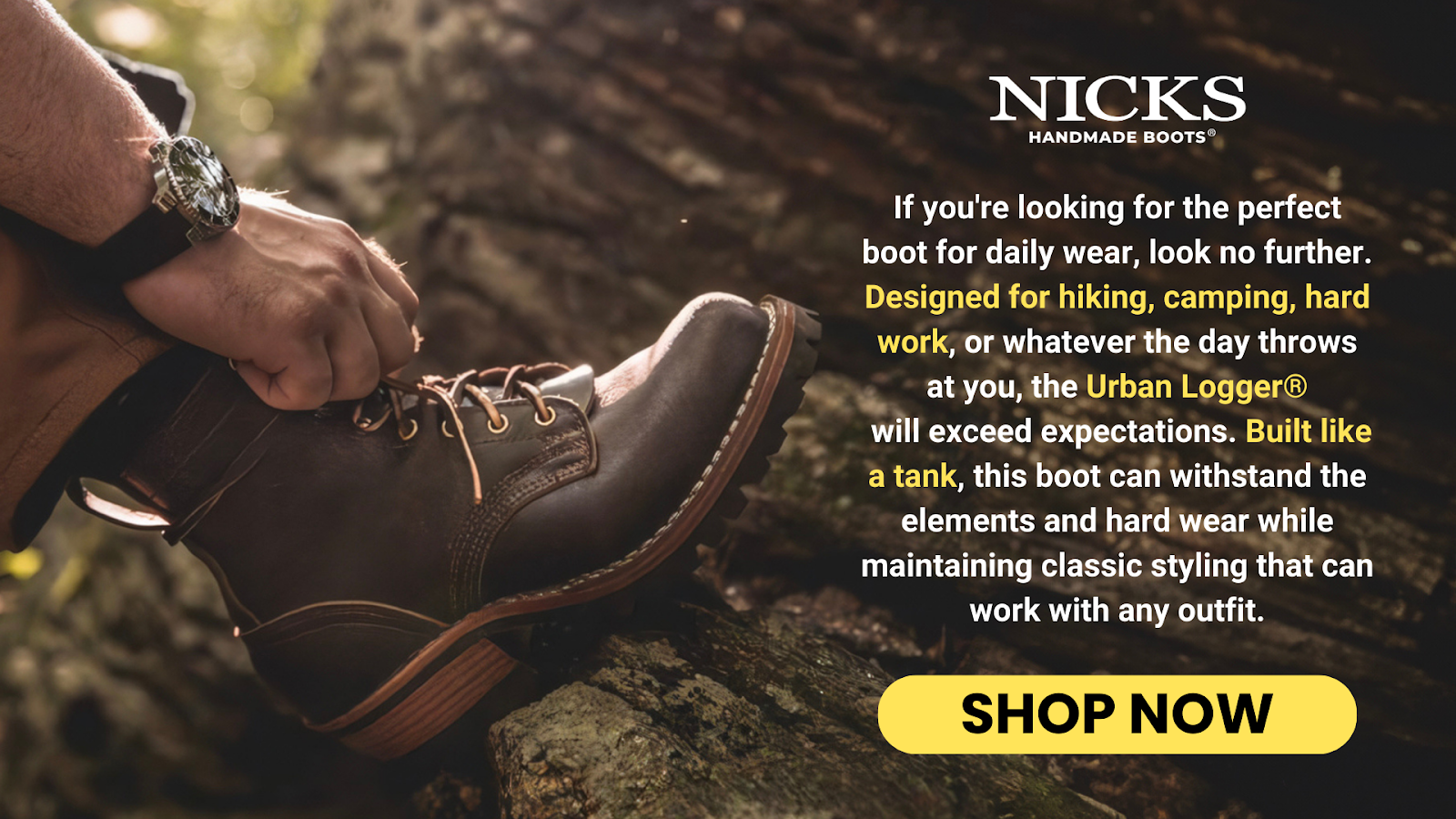
Frequently Asked Questions About Boot Width Charts
What are common misconceptions about boot sizing?
Misconceptions include that all boot widths are standardized across brands, and that your shoe size is the same as your boot size. Each brand may have different standards, so it’s important to refer to the specific boot width chart provided.
How can the material of a boot affect its fit over time?
Leather boots often stretch and mold to the shape of your feet, potentially making a snug fit perfect after some wear. Synthetic materials, however, tend to retain their shape and size, making initial fit crucial.
Why is it important to try on boots later in the day?
Feet typically swell throughout the day. Trying on boots in the afternoon or evening ensures a more accurate fit, preventing discomfort from boots that may feel too tight earlier in the day.
Can the wrong boot width affect my foot health?
Yes, boots that are too narrow can cause long-term foot issues, while those too wide won't provide adequate support, affecting both comfort and foot health.
How do I know if the flex point of a boot is correct for me?
The boot's flex point should align with the natural bending point of your toes. Incorrect alignment can cause discomfort and damage the boot.
What should I consider when choosing boots for different activities?
Consider the primary use—work boots should be snug but not tight to accommodate standing or walking, while leisure boots might need extra room for thicker socks or slight swelling.
Why is measuring both feet for boots important?
Feet can vary in size. Measuring both feet ensures you choose a size based on the larger foot, providing a better overall fit.
What tips are there for using customer reviews when selecting boots?
Reviews can provide insights on how true to size and comfortable boots are in real-world use, especially concerning width and fit for those with unique sizing needs.
What errors should I avoid when choosing boot width?
Common mistakes include not measuring your foot each time you buy boots, choosing a width based on shoe size alone, and not considering the sock thickness you’ll wear.
How do variations in brands affect my choice of boot width?
Even within the same brand, different lines or models can have different fits. Always check the brand-specific sizing guides and consider any notes on variability.



